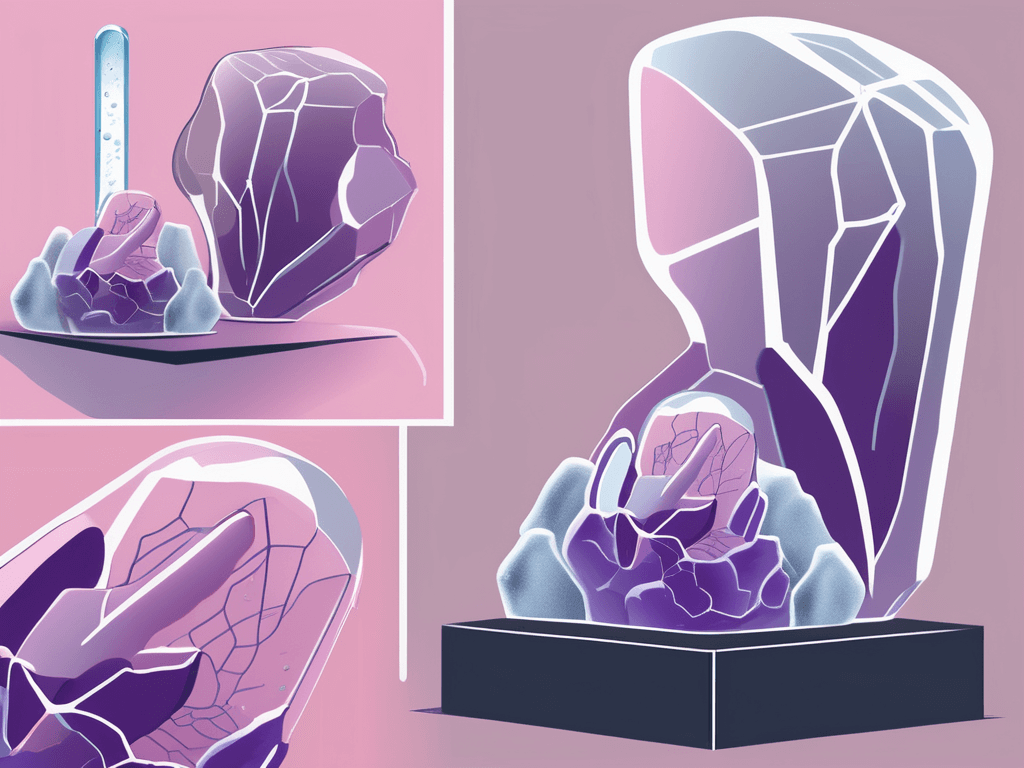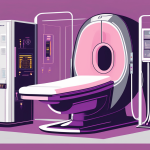Cryotherapy emerges as a promising treatment for prostate cancer, offering a minimally invasive option that leverages extreme cold to destroy cancer cells. This guide delves into prostate cancer basics, emphasizing the prostate’s role and how cryotherapy targets cancer cells with precision, minimizing damage to surrounding tissues. Studies show cryotherapy’s effectiveness, presenting it as a viable alternative to surgery and radiation, with fewer side effects and quicker recovery times. As advancements in cryotherapy continue, combining it with other therapies could enhance treatment outcomes, marking an exciting future in prostate cancer care. Patients are encouraged to explore cryotherapy with their healthcare providers as part of their treatment plan.
Prostate cancer is a serious health concern affecting millions of men worldwide. It is crucial to explore all treatment options available to individuals diagnosed with this disease. One such option that has gained attention in recent years is cryotherapy. This innovative treatment approach holds tremendous promise in the fight against prostate cancer.
Understanding Prostate Cancer
Before delving into the details of cryotherapy, it is important to understand the basics of prostate cancer. The prostate gland is a crucial part of the male reproductive system, located just below the bladder. It produces seminal fluid, which nourishes and transports sperm during ejaculation. Unfortunately, this gland is susceptible to developing cancerous cells.
Prostate cancer is one of the most common types of cancer in men. It typically grows slowly and may not cause any symptoms in its early stages. However, if left untreated, it can spread to other parts of the body and become more aggressive.
The Anatomy of the Prostate
To fully comprehend the impact of prostate cancer, it is essential to acknowledge the anatomy of the prostate gland. The prostate consists of several zones, with the peripheral zone being the most common location for cancer to develop. The peripheral zone surrounds the urethra, the tube that carries urine from the bladder out of the body. Understanding this arrangement helps medical professionals determine the best treatment approach to target cancerous cells accurately.
Additionally, the prostate is divided into lobes, which are further divided into smaller sections called lobules. Each lobule contains tiny glands that produce seminal fluid. These glands are susceptible to the development of cancerous cells, leading to prostate cancer.
Common Symptoms of Prostate Cancer
During the early stages of prostate cancer, symptoms may be absent or very subtle. However, as the disease progresses, individuals may experience urinary difficulties, including a weak urine flow or frequent urges to urinate. These symptoms occur because the growing tumor can press against the urethra, causing obstruction and interfering with normal urine flow.
Other symptoms can include blood in the urine or semen, pain during ejaculation, or discomfort in the pelvic area. These symptoms may indicate that the cancer has advanced and spread beyond the prostate gland. It is crucial to pay attention to any potential warning signs and seek medical advice promptly.
Risk Factors and Prevention
Knowing the risk factors associated with prostate cancer can help individuals make informed decisions about their health. While age and genetics play a significant role, lifestyle factors such as diet and exercise can also influence the development of prostate cancer.
Age is the most significant risk factor for prostate cancer. The risk increases with age, with the majority of cases occurring in men over the age of 65. Additionally, having a family history of prostate cancer, especially in a first-degree relative, such as a father or brother, increases the risk.
There is ongoing research to understand the role of diet in prostate cancer prevention. Some studies suggest that a diet rich in fruits, vegetables, and whole grains, while low in red meat and high-fat dairy products, may lower the risk. Regular exercise and maintaining a healthy weight are also associated with a reduced risk of developing prostate cancer. While it is not possible to prevent prostate cancer entirely, incorporating a healthy lifestyle, maintaining a balanced diet, and attending regular check-ups can all contribute to prevention efforts. Early detection through regular screenings, such as prostate-specific antigen (PSA) tests and digital rectal exams (DRE), can help identify prostate cancer in its early stages when treatment options are more effective.
An Overview of Cryotherapy
Now let’s dive into what makes cryotherapy an intriguing treatment option for prostate cancer. Cryotherapy, also known as cryoablation, is a minimally invasive procedure that involves freezing cancerous cells and destroying them. This treatment modality has gained popularity due to its ability to selectively target cancer cells while minimizing damage to surrounding healthy tissues.
Prostate cancer is one of the most common cancers among men, and treatment options vary depending on the stage and aggressiveness of the disease. Cryotherapy offers a unique approach by harnessing the power of extreme cold temperatures to eradicate cancer cells.
The Science Behind Cryotherapy
Cryotherapy utilizes extreme cold temperatures to destroy cancer cells effectively. By freezing the abnormal cells, this technique disrupts their cellular structure and inhibits their ability to survive and reproduce. The precise application of freezing temperatures is what makes cryotherapy such a promising treatment option.
When the cancer cells are exposed to freezing temperatures, ice crystals form within the cells, causing damage to their membranes and organelles. This disruption ultimately leads to cell death. Additionally, the freezing process triggers an immune response, attracting immune cells to the treated area, further enhancing the destruction of cancer cells.
The Procedure of Cryotherapy
During cryotherapy, small needles are inserted into the prostate gland under ultrasound guidance. These needles act as delivery channels for the extremely cold gases or liquids that are circulated through them. The freezing substances, such as liquid nitrogen or argon gas, are carefully controlled to achieve the desired temperature and duration of treatment.
Prior to the procedure, patients may undergo general or local anesthesia to ensure their comfort. The insertion of the needles is guided by real-time ultrasound imaging, allowing the physician to precisely position them within the prostate gland. This accuracy is crucial to effectively target the cancerous cells while minimizing damage to healthy tissues.
Once the needles are in place, the freezing substances are circulated through them, rapidly cooling the surrounding tissue. The temperature is carefully monitored to ensure that it remains within the therapeutic range. The freezing and thawing cycles are repeated multiple times to maximize the destruction of cancer cells. Throughout the procedure, the patient’s vital signs and pain levels are closely monitored. After cryotherapy, patients may experience temporary side effects such as swelling, bruising, or discomfort in the treated area. However, these symptoms typically subside within a few days or weeks.
Cryotherapy is often performed as an outpatient procedure, allowing patients to return home on the same day. Recovery time varies depending on individual factors, but most patients can resume their normal activities within a few days to a week. It is important to note that cryotherapy may not be suitable for all prostate cancer patients. Factors such as the stage of the disease, the size and location of the tumor, and the patient’s overall health should be considered when determining the appropriateness of cryotherapy as a treatment option.
In conclusion, cryotherapy offers a unique and promising approach to treating prostate cancer. By harnessing the power of extreme cold temperatures, this minimally invasive procedure selectively targets cancer cells while minimizing damage to healthy tissues. The science behind cryotherapy and the precise procedure involved make it an intriguing option for patients seeking alternative treatment options for prostate cancer.
Cryotherapy as a Treatment for Prostate Cancer
Now that we understand the science and procedure behind cryotherapy, let’s explore its effectiveness as a treatment for prostate cancer.
The Effectiveness of Cryotherapy
Studies have shown promising results when it comes to the effectiveness of cryotherapy as a treatment for prostate cancer. In many cases, cryotherapy has been found to be as effective as traditional treatments such as surgery or radiation therapy. Additionally, cryotherapy offers the advantage of being a minimally invasive procedure with a shorter recovery time.
Potential Side Effects and Risks
As with any medical procedure, cryotherapy does come with potential side effects and risks. Common side effects include temporary urinary incontinence and erectile dysfunction. However, these side effects are typically less severe and of shorter duration compared to surgery or radiation therapy. It is important to have open and honest discussions with your healthcare provider to fully understand the potential risks.
Comparing Cryotherapy to Other Treatment Options
Understanding the merits of cryotherapy would not be complete without comparing it to other treatment options for prostate cancer.
Cryotherapy vs. Surgery
When comparing cryotherapy to surgery, there are clear advantages to consider. Cryotherapy is a minimally invasive procedure, which means it has a lower risk of complications and faster recovery times. Additionally, cryotherapy can be an attractive option for individuals who may not be suitable candidates for surgery due to underlying health conditions.
Cryotherapy vs. Radiation Therapy
While radiation therapy has been a popular treatment option for prostate cancer, it is not without its drawbacks. Cryotherapy presents a compelling alternative to radiation therapy, as it offers comparable outcomes with fewer side effects. Additionally, individuals who have previously undergone radiation therapy and experienced a recurrence of prostate cancer may find cryotherapy to be a viable choice.
The Future of Cryotherapy in Prostate Cancer Treatment
In recent years, there have been exciting advancements in the field of cryotherapy for prostate cancer. These advancements promise even greater efficacy and reduced side effects in the future.
Recent Advances in Cryotherapy
Ongoing research and technological advancements have led to the development of more precise and targeted cryotherapy techniques. This allows for greater control and accuracy when freezing cancer cells, minimizing the impact on surrounding healthy tissues and organs.
Potential Developments in the Field
Looking ahead, researchers are exploring the potential of combining cryotherapy with other treatment modalities, such as immunotherapy or targeted therapies. These combinations have the potential to further improve outcomes and provide tailored treatment approaches for individuals with specific genetic or molecular profiles.
In conclusion, cryotherapy is proving to be a promising treatment option for individuals diagnosed with prostate cancer. Its ability to selectively target cancer cells while minimizing side effects is highly encouraging. As advancements continue to be made, cryotherapy may become an increasingly integral component of prostate cancer treatment. If you or a loved one has been diagnosed with prostate cancer, be sure to discuss cryotherapy with your healthcare provider to determine if it is a suitable option for your specific case.






